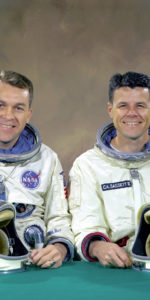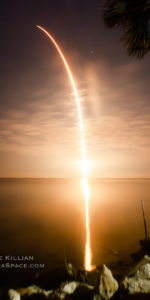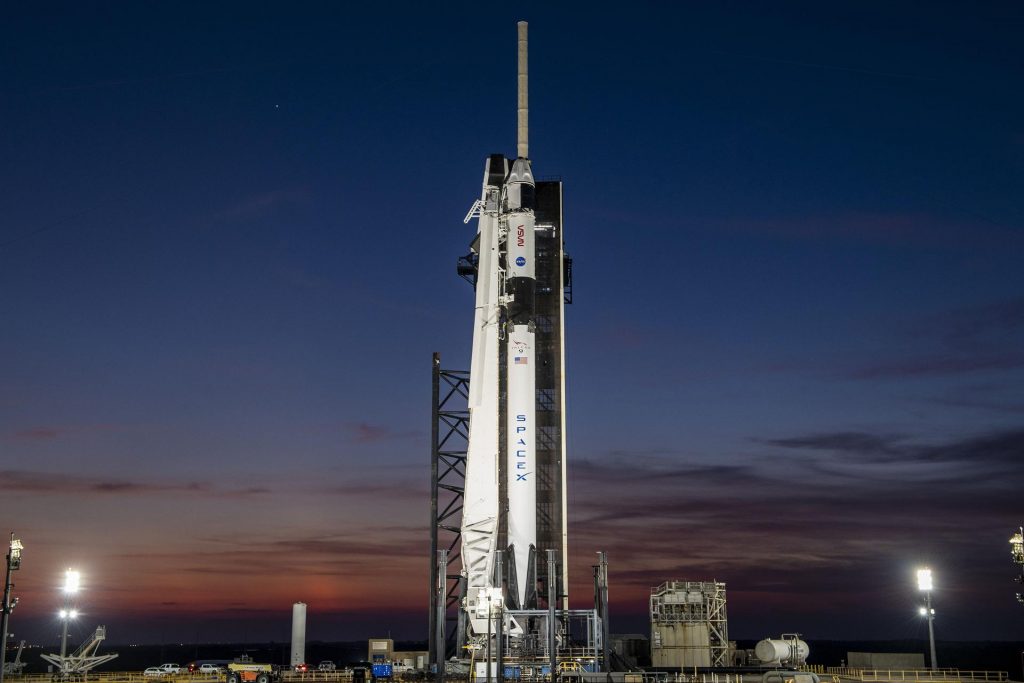
SpaceX is primed to kick off an ambitious multi-launch March, with hopes that two Falcon 9s may fly just 13 hours apart on Thursday: a Starlink-laden mission from Space Launch Complex (SLC)-4E at Vandenberg Space Force Base, Calif., preceded by Crew-6—carrying the four-times-flown Dragon Endeavour and NASA astronauts Steve Bowen and Warren “Woody” Hoburg, Russian cosmonaut Andrei Fedyayev and Sultan Al-Neyadi of the United Arab Emirates (UAE) on a six-month increment to the International Space Station (ISS)—from historic Pad 39A at Florida’s Kennedy Space Center (KSC). Both missions are expected to terminate with offshore Autonomous Spaceport Drone Ship (ASDS) landings for the two Falcon 9 core stages.
Up first is the brand-new B1078 core, which arrived in Florida in early February after completing her qualification tests at SpaceX’s Rocket Development Facility in McGregor, Texas. Mated to a shiny second stage, she received Dragon Endeavour over the weekend of 18/19 February and was put through a Static Fire Test of her nine Merlin 1D+ engines—as is customary ahead of a booster’s maiden launch—just last Friday.
Meanwhile, Bowen, Hoburg, Fedyayev and Al-Neyadi flew from NASA’s Johnson Space Center (JSC) in Houston, Texas, arriving at KSC on the 22nd, where they were welcomed by a throng of officials, well-wishers, journalists and photographers. They participated in a fully-suited “Dry Dress” rehearsal of their launch day activities and routines late last week.
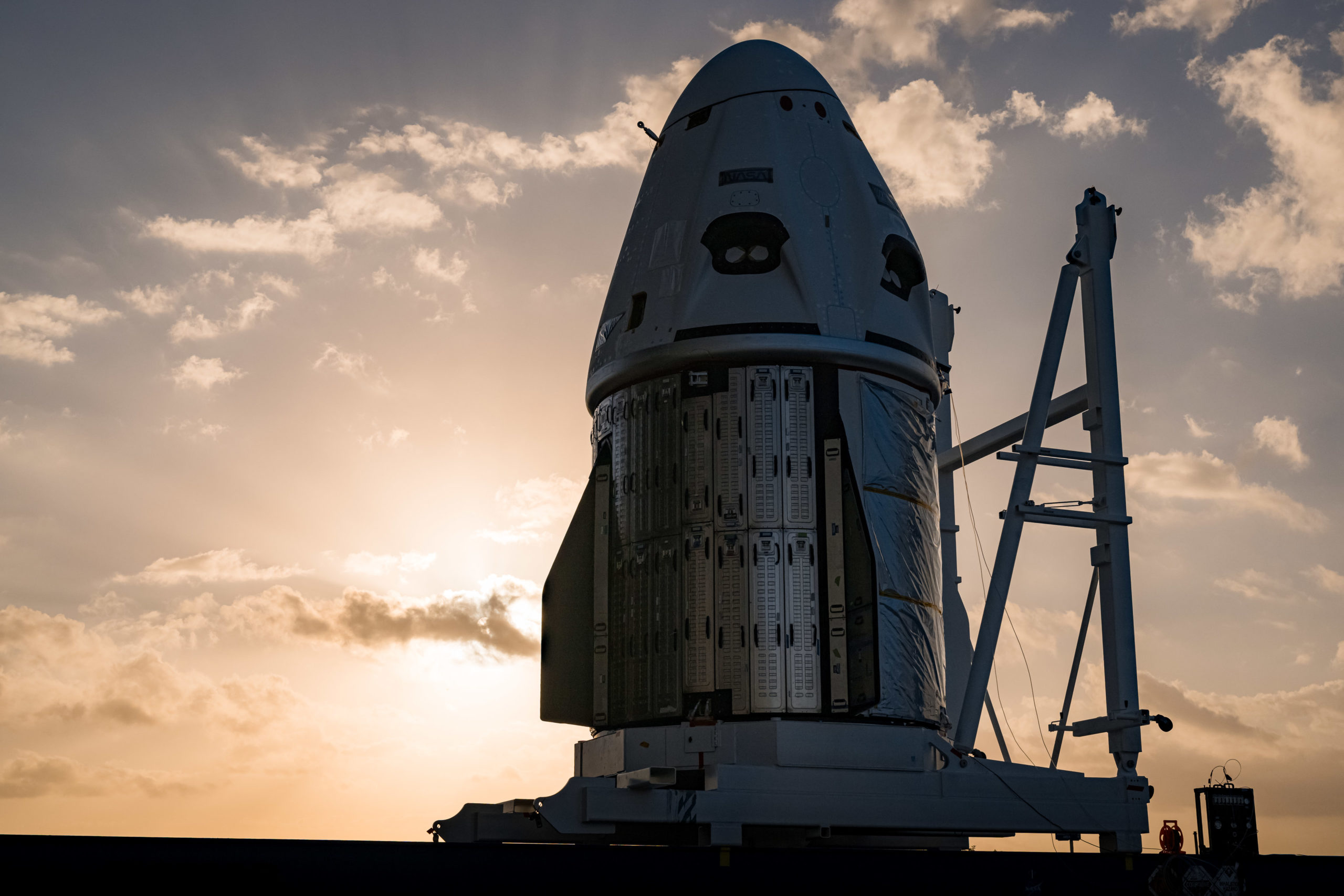
Following smooth passage through the Launch Readiness Review (LRR) last Saturday evening, countdown clocks began ticking towards an “instantaneous” T-0 at 1:45 a.m. EST Monday. Weather conditions for the opening launch attempt, as outlined in AmericaSpace’s post-LRR story, were highly favorable, hovering around 90-95 percent.
But Monday was not to be Crew-6’s day. The crew departed their quarters in the Neil Armstrong Operations & Checkout Building, rode a pair of Tesla Model Xs to the pad and were strapped into their seats aboard Dragon Endeavour.
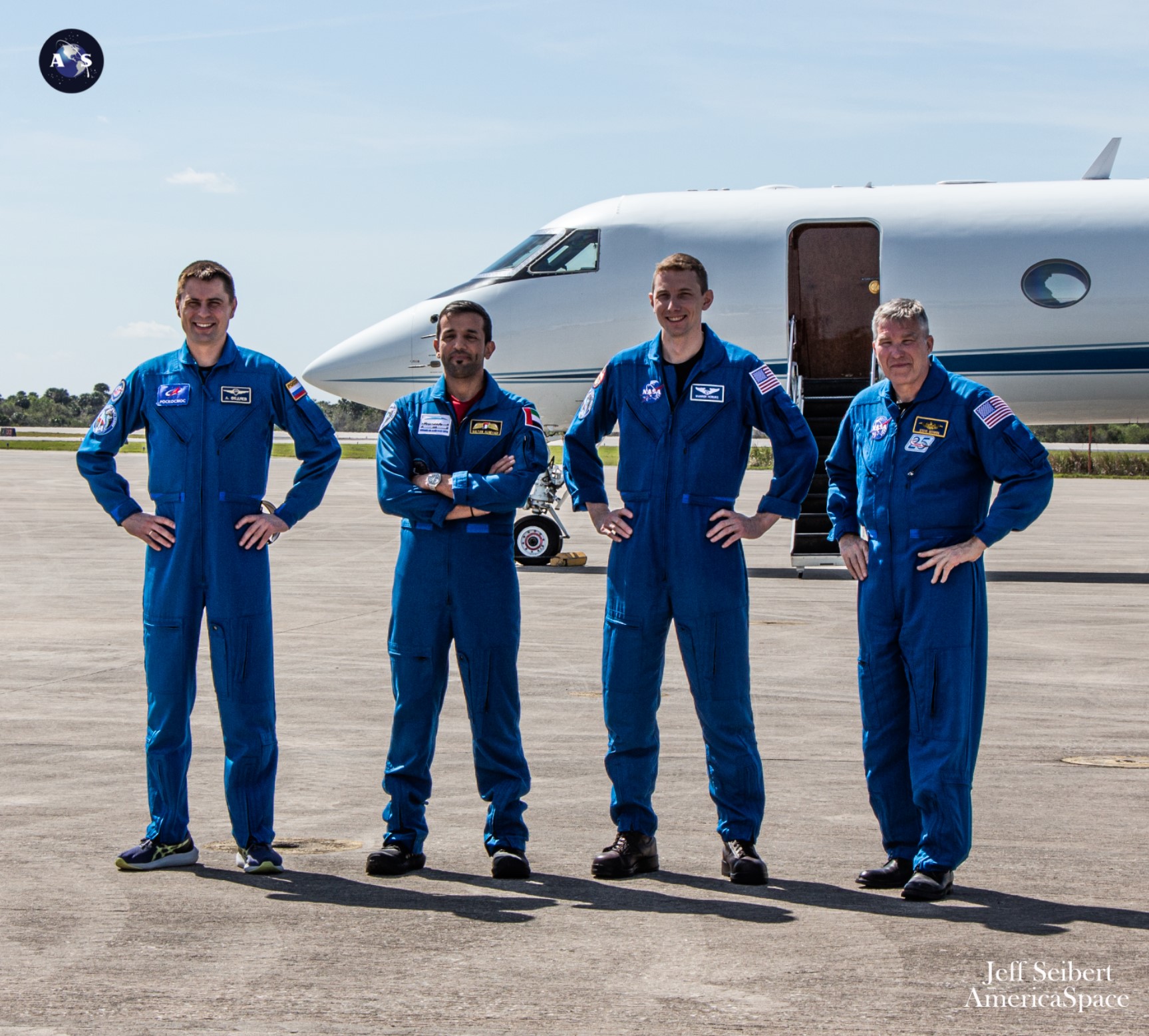
Communications, pressure and leak checks were satisfactorily concluded, but the clock was halted at T-2 minutes and 12 seconds, when an ominous “Hold, Hold, Hold” call echoed over the countdown net. Since this was an instantaneous “launch window”, any hold forced an immediate scrub and teams promptly set to work draining the Falcon 9’s propellants, disarming the launch abort system and returning the Crew Access Arm (CAA) alongside Dragon Endeavour’s hatch to allow Bowen and his men to disembark.
The hold came in response to what NASA termed “an unusual data signature” related to confirmation of the proper “bleed-in” of Triethylaluminum-Triethylboron (TEA-TEB), an ignition fluid used on the Falcon 9’s nine Merlin 1D+ first-stage engines. “The bleed-in process ensures there is an adequate supply of this fluid at each engine to mix with liquid oxygen to start the engines,” NASA explained early Wednesday.
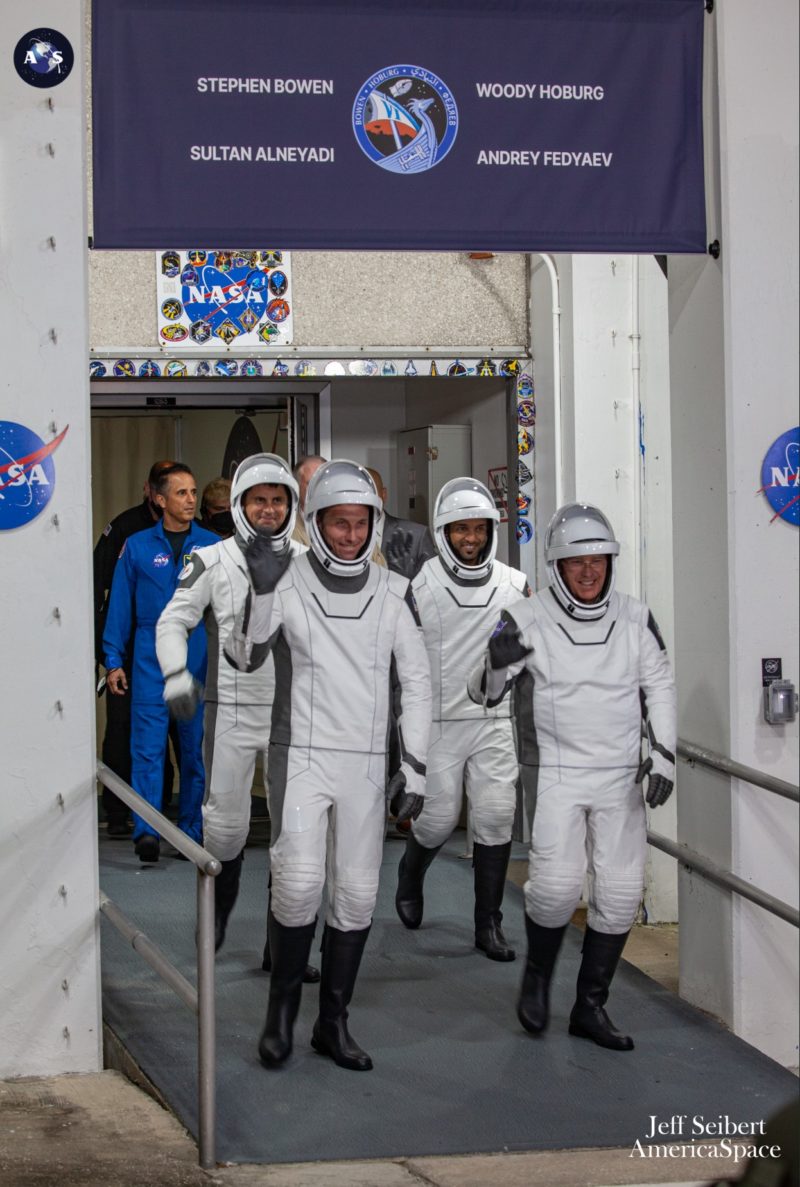
“During pre-launch, the TEA-TEB—which originates in a ground supply tank—flows to the rocket’s interface and back to a catch tank to remove gas from the ground plumbing,” it was added. “During engine start, the fluid then flows to the engines for ignition. Flow into the catch tank is one of several parameters used to determine that the fluid has been properly bled into the system.”
After a thorough data review, NASA and SpaceX engineers determined that there was a reduced flow back to the catch tank, caused by a clogged ground filter. Teams replaced the filter, purged the TEA-TEB line with nitrogen and verified that the hardware is clean and ready to support a second launch attempt at 12:34 a.m. EST Thursday.
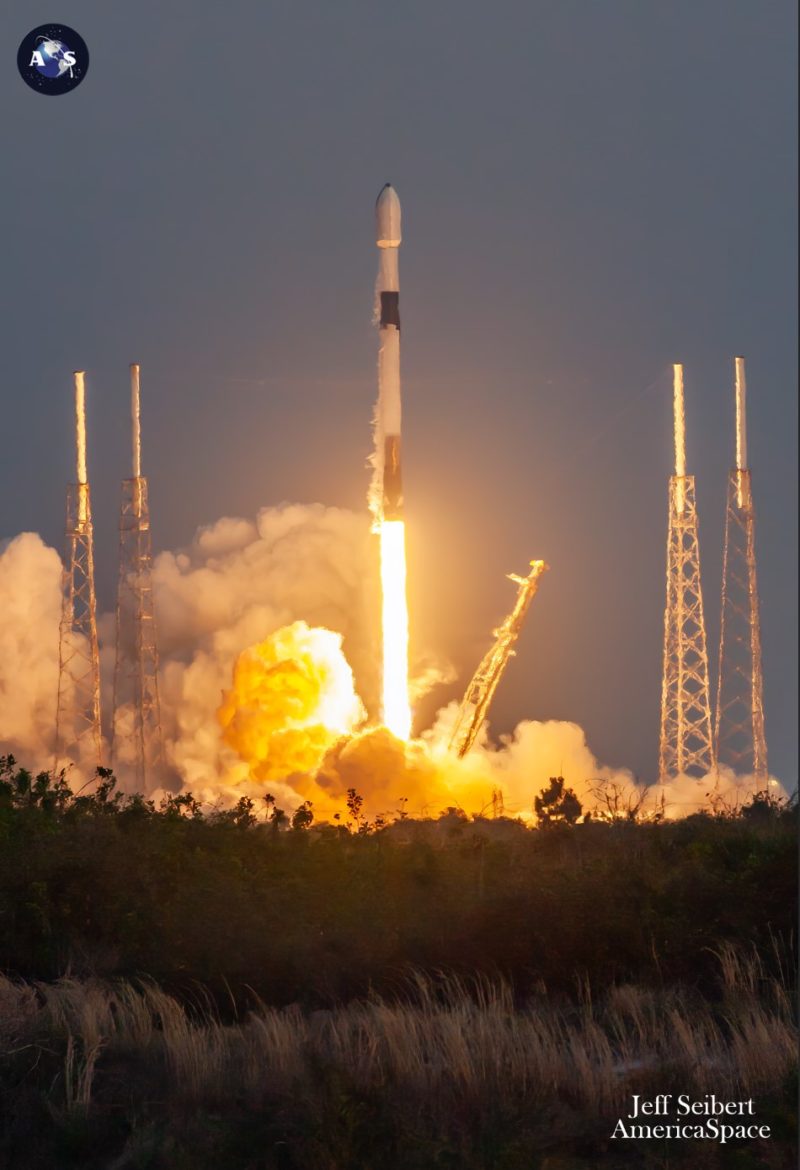
All that apparently stands in the way is the weather, although even Mother Nature—often so fickle in her dealings with the Space Coast—seems to be on Crew-6’s side, pledging a 95-percent probability of acceptable conditions for Thursday’s just-past-midnight launch. Only the minor chance of a rain shower appearing over Pad 39A around launch time presents a potential condition of violation.
“A low-pressure system is moving through the Great Plains, as high pressure builds back into Florida and the ascent corridor,” noted the 45th Weather Squadron at Patrick Space Force Base in a Tuesday afternoon update. “Through the day Wednesday, this low-pressure area will move into the Ohio Valley and strengthen as the high-pressure ridge slides east of the ascent corridor.
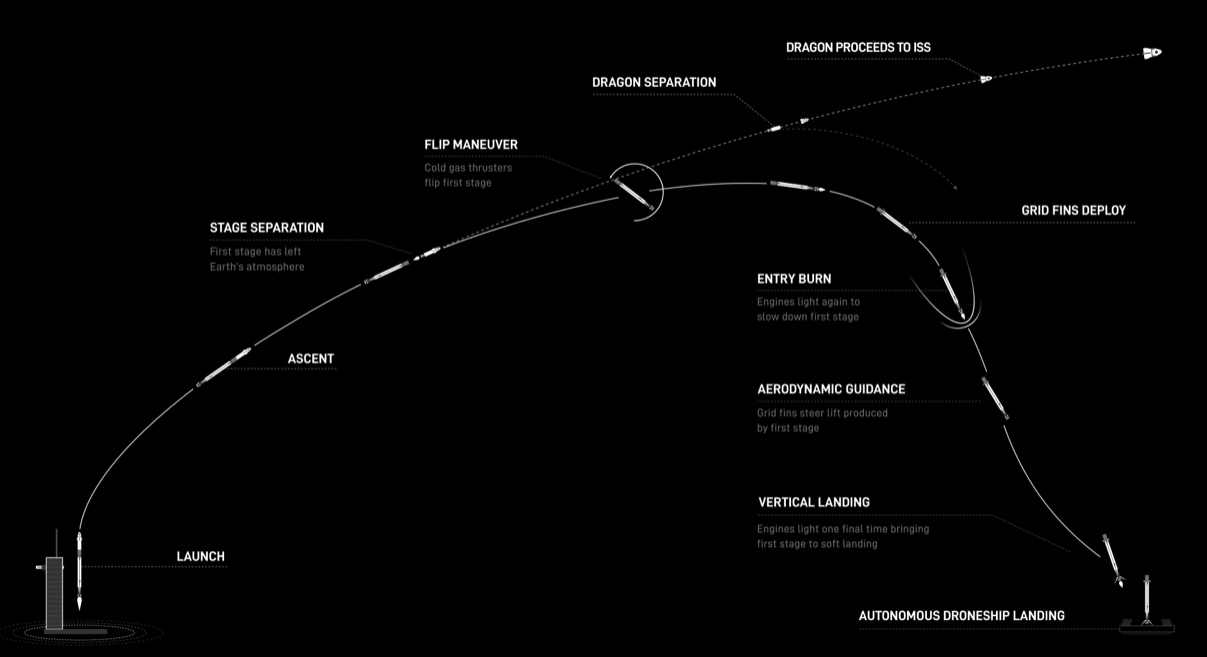
“By launch time early Thursday, the ridge will extend from South Florida to Bermuda, creating moderate winds in the staging area, due to the pressure gradient between the ridge and a low-pressure area,” the 45th continued. “Launch weather remains favorable, with only a very slight chance of a shower developing over the pad at launch time.”
Should tomorrow’s T-0 at 12:34 a.m. EST be missed, a backup opportunity exists at 12:11 a.m. EST Friday. Heading later into the week, and into the weekend, the weather picture becomes decidedly dicier, as a stronger low-pressure develops in Texas, progressively enhancing the winds and cloud cover across Florida and the mid-Atlantic states and threatening high winds and rain showers, with the probability of acceptable conditions diminishing to 70 percent on Friday and 60 percent on Saturday.
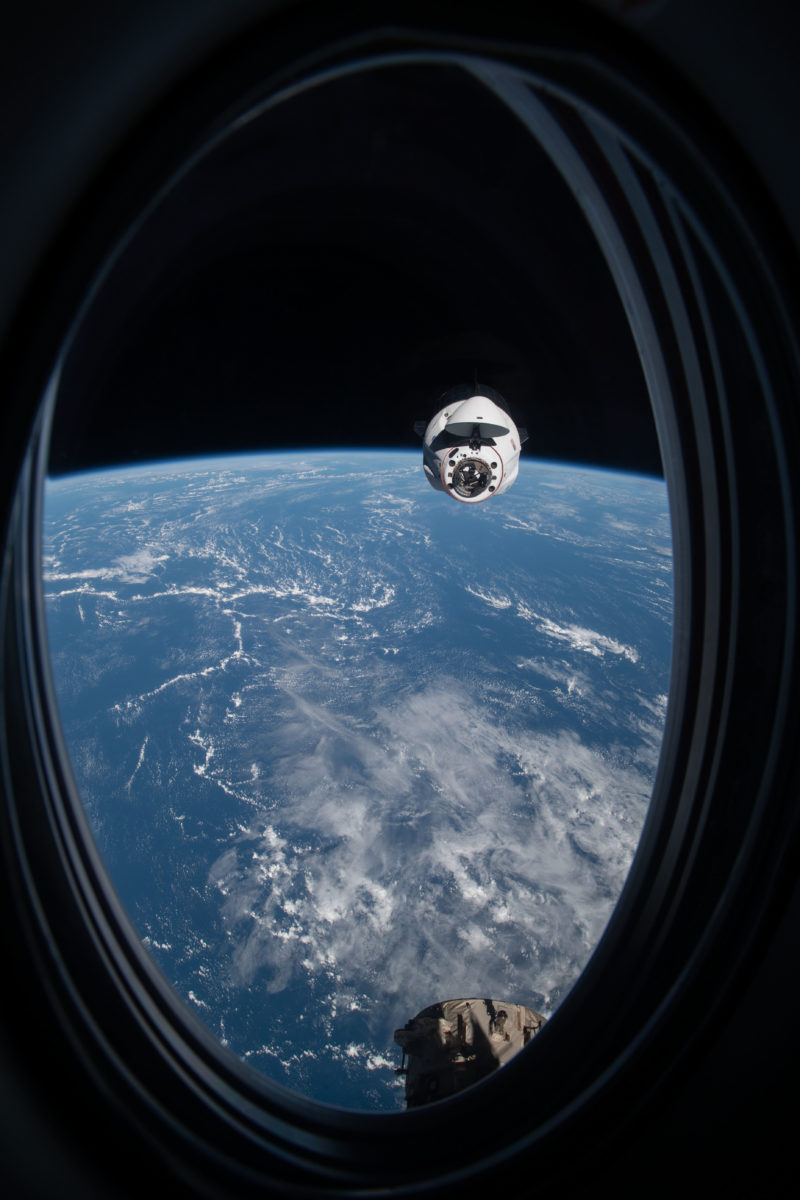
Following launch, Dragon Endeavour will separate from the Falcon 9’s second stage about 12 minutes into flight and her nose cone will be opened shortly afterwards to expose the rendezvous and docking sensors. Bowen’s crew will then jump into a 24.5-hour rendezvous profile, lasting 16 orbits, which will lead to an autonomous docking at the space-facing (or “zenith”) port of the station’s Harmony node at 1:17 a.m. EST Friday.
After pressurization and leak checks are complete, hatches will be swung open and the newcomers will be welcomed aboard by Expedition 68 Commander Sergei Prokopyev, his Russian comrades Dmitri Petelin and Anna Kikina, Japan’s Koichi Wakata and U.S. astronauts Frank Rubio, Nicole Mann and Josh Cassada. Hatch opening is targeted for 3:27 a.m. EST and a welcoming ceremony is set for about 3:40 a.m. EST.
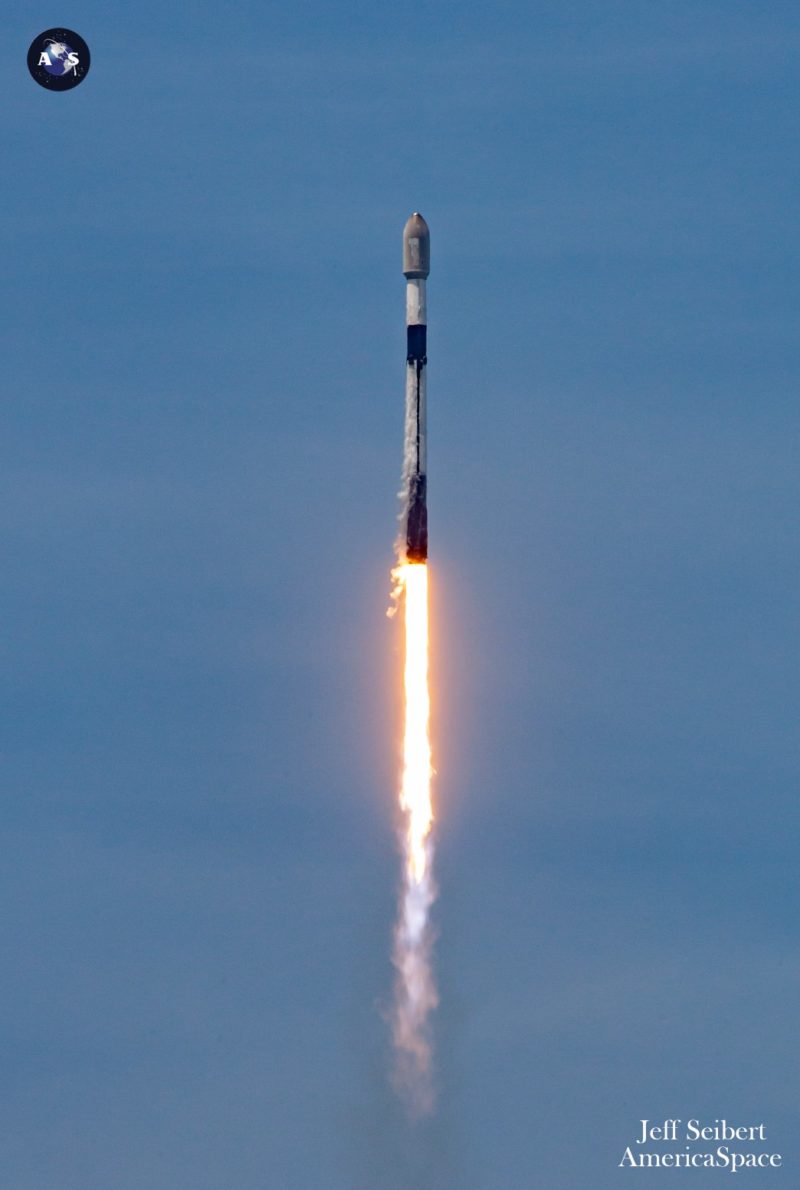
Thirteen hours after Crew-6’s launch, the 11-times-flown B1061 is slated to rise from Vandenberg’s storied SLC-4E, carrying 51 Starlink internet communications satellite uphill for emplacement into low-Earth orbit at an altitude of 350 miles (570 kilometers), inclined 70 degrees to the equator. Launch had already been postponed from Monday, due to poor weather at the West Coast site, before aiming for 11:20 a.m. PST Tuesday, then being nudged 24 hours to the right to 11:06 a.m. PST Wednesday.
But with Crew-6 operations taking priority, SpaceX tweeted late Tuesday that if all systems and weather remain good for Dragon Endeavour’s 12:34 a.m. EST Thursday launch, it would “adjust” the Vandenberg mission accordingly. And that is exactly what happened, with SpaceX issuing a new T-0 of 10:52 a.m. PST Thursday, only 13 hours and 18 minutes after Dragon Endeavour’s scheduled launch, which, if achieved, will mark the second-shortest interval between a pair of Falcon 9 flights.
FOLLOW AmericaSpace on Facebook and Twitter!
Missions » Commercial Space »



